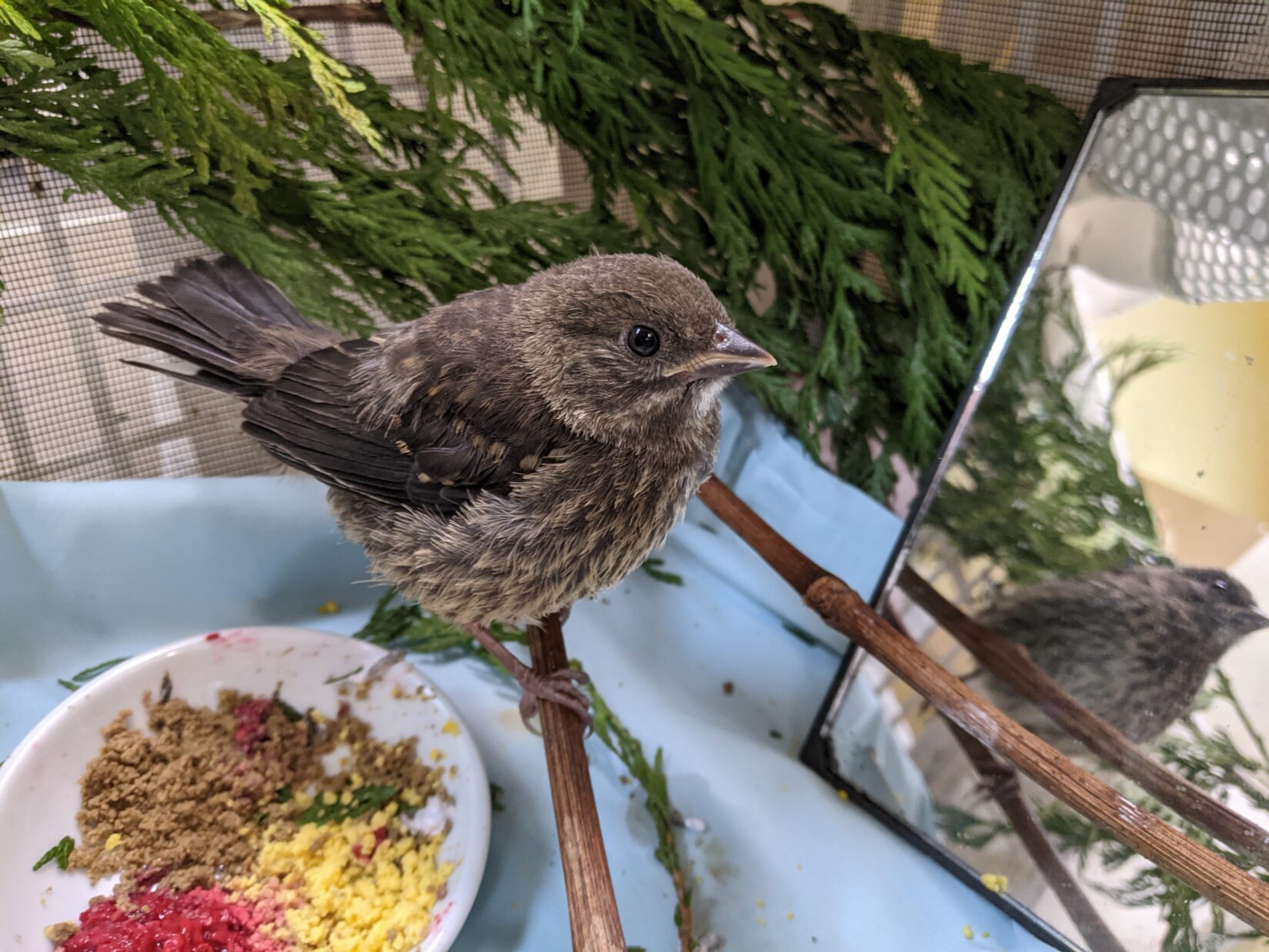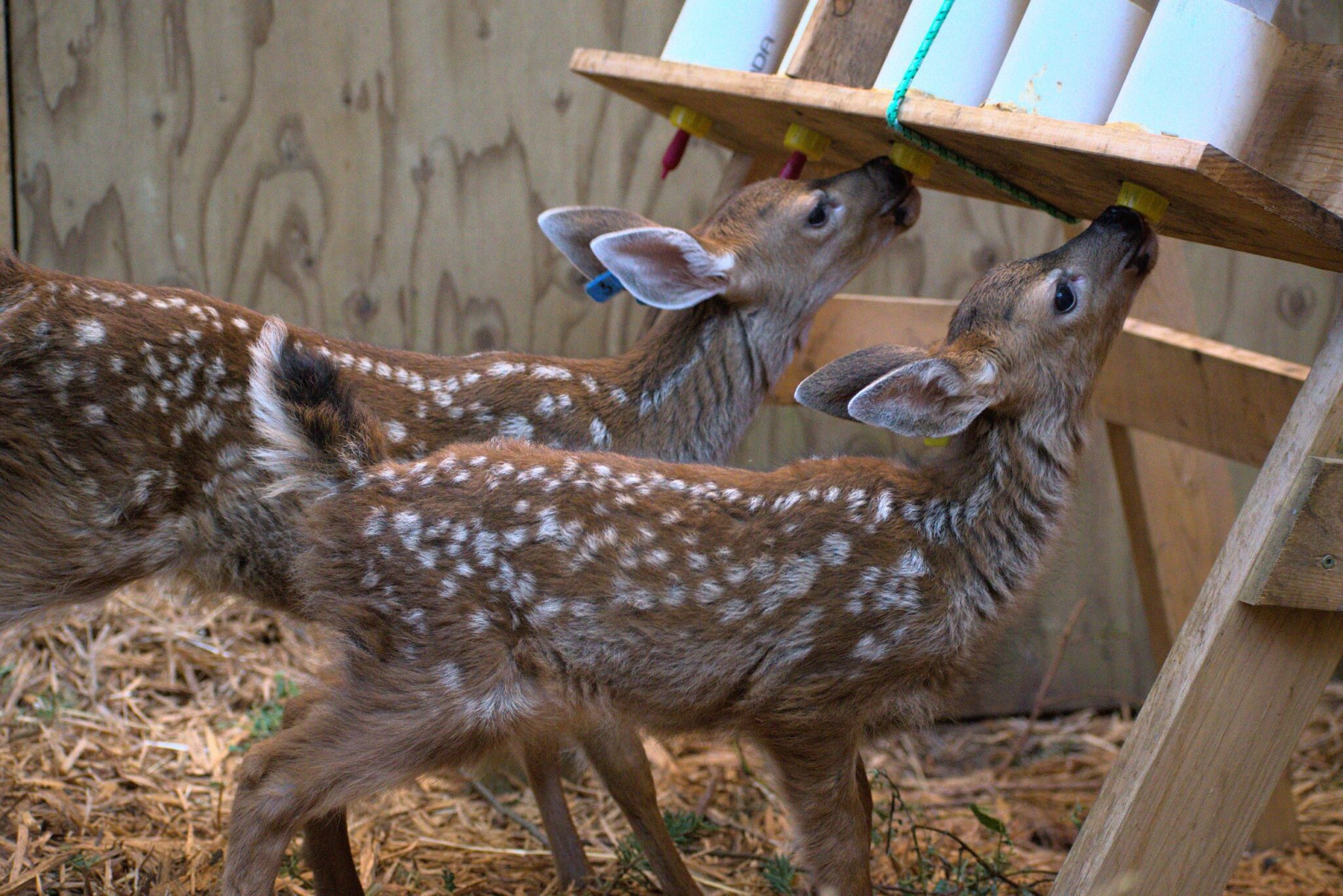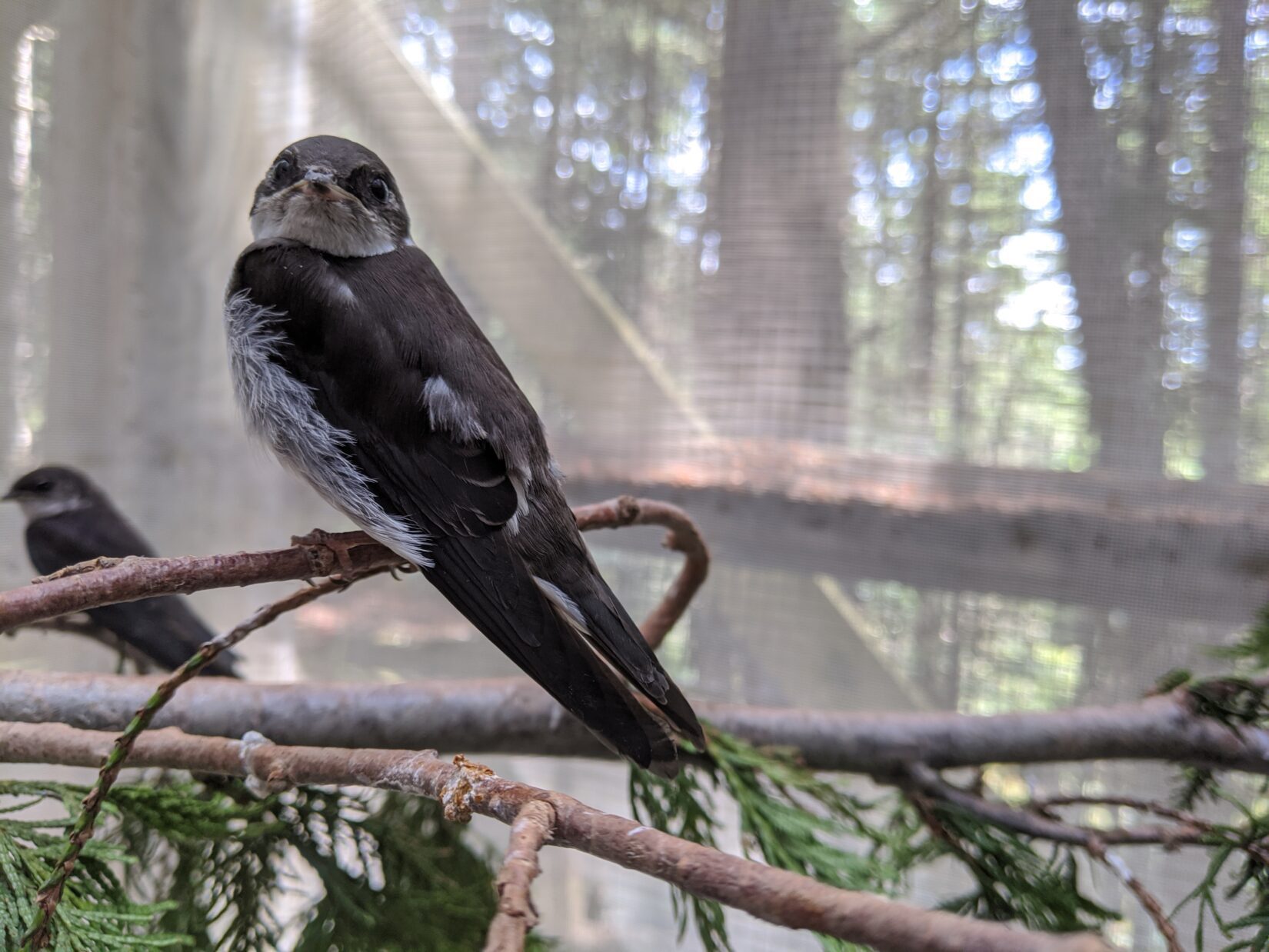The goal of wildlife rehabilitation is to release recovered animals back home, into the wild. Wild ARC rehabilitators work hard to ensure that animals have all the natural behaviours and skills they will need to survive in their environment. Animals are given plenty of enrichment to learn how to fly, swim, dive, climb, fish and forage… everything that they would normally need to survive. They also need to learn how to stay safe – and that means learning a healthy fear of people.
When animals are first born, the first face they should see should look like them, usually this is their parents and siblings. Many animals rely on a behaviour called “imprinting” to learn right away who their family is. Wildlife rehabilitators often care for orphaned animals who are susceptible to imprinting. However, it’s essential for the animals that they don’t imprint on or become habituated to humans.
It may sound cute to have a little friend, but it’s ultimately dangerous for the animals. If animals imprint on humans while they’re in our care, they may not learn the skills they need to survive on their own after release. Wild animals also get into trouble when they’re too comfortable around people – they’re more likely to be hit by cars, and trapped or killed if they’re perceived as a “nuisance”.
At Wild ARC, we use a number of different strategies to help prevent imprinting:
Same species, same space
Wherever possible, we try to only keep animals of the same species together. Aside from the health and safety benefits, this also means they learn to only associate with their own species and imprint correctly. In some special circumstances, compatible bird species may be kept together for company.
If there’s not a friend readily available in care, we will also provide patients with a mirror to give them a friendly face in their reflection.
Minimize contact
There are a few different ways we can minimize contact when caring for our wild patients:
- Minimize handling
- Minimize the number of people who work with them
To minimize handling, we don’t hand-feed any animals, except for very small babies that need the extra help. Letting animals eat on their own – supplemented with enrichment – helps them learn how to forage, just like they would on their own in the wild. Wild ARC treats nearly 140 different species each year, each with their own specialized, species-appropriate diet prepared fresh each day.
Even with young fawns that would still be drinking their mother’s milk, we can provide a hands-off approach by using tools like this bottle feeding rack.
For animals like very young gulls or owls, and even hummingbirds, we can also use specialized puppets when we need to hand-feed them. This hides our hands, which helps them recognize their own species, or for hummingbirds, helps them recognize flowers as sources of food.
For animal species that are particularly susceptible to imprinting, we will also minimize the number of people that will care for them. For example, when we have orphaned river otters in care, only wildlife rehabilitators will provide their food and water, set up any enrichment, clean their enclosures, or give them medications or other treatments.
Suit up
Similarly, for species that are particularly susceptible to imprinting, we put on a special “uniform” to prevent animals from recognizing us. For most animals, this uniform includes:
- A lab coat or coveralls
- Gloves
- Rubber boots
- A mask

Animals wouldn’t normally encounter this fashionable look when they’re back out in the wild, so they won’t learn to associate it with people. It also ensures that to them, everyone looks the same – they don’t develop any special preferences for certain people.
Minimize sight and sound
It may sound simple, but by minimizing sight and sound, we actually help animals stay calm and prevent imprinting.
Most of our enclosures are covered with a light-penetrating but vision-obscuring material. This means they get all the benefits of natural light, but they don’t necessarily see staff and volunteers coming and going outside.
Unfamiliar sound can be stressful for wild animals, and we don’t want them to associate our voices with the arrival of food. As much as possible, we try to keep their environment calm and quiet – keeping our voices low, and talking as little as possible in their presence.
It’s a lot of work to prevent imprinting, but it’s all worthwhile to make sure that Wild ARC patients get the best possible second chance at a wild life.
Subscribe to WildSense
Want to get more stories like this in your inbox? Subscribe to WildSense, our bi-monthly e-newsletter:
The BC SPCA uses your personal information to update you on our work for animals as well as for advertising and analytics purposes. More information on uses and how to opt-out can be found in our Privacy Policy.



